Fizzy Snow
When there’s no snow to play with outside, I like to make our own snow. It makes for a great sensory bin full of possibilities. Today I added a few things to the ice and made fizzy snow! It’s an easy way to add a little science exploration to your sensory play.
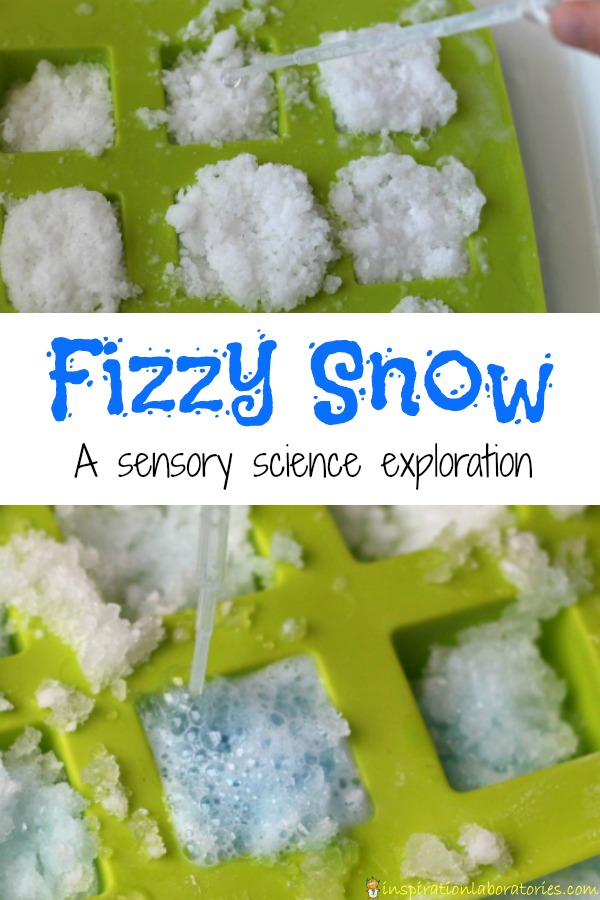
Fizzy Snow
To make our fizzy snow, we relied on baking soda and vinegar (our favorite sensory science materials). In the past, we made a fizzy melting snowman by adding baking soda to snow from outside. This worked okay but it wasn’t very impressive. I wanted to amp up the fizziness.
I simply dissolved some baking soda in water (about 4 tablespoons of baking soda to 1 1/2 cups of warm water) and added it to ice molds. Once frozen, I crushed the ice up in the blender. I added the baking soda snow to a baking dish. I mixed in some regular snow to fill the dish.
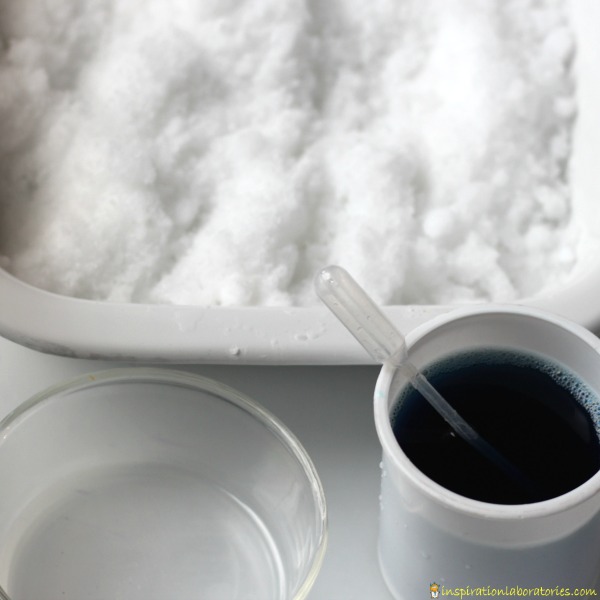
To the vinegar, I added a bit of dish soap and blue food coloring. I set up the invitation above to encourage combining the snow with the colored vinegar. After a few squirts of vinegar, we saw some fizzy bubbles. Advanced question to ask: why is there less fizz than if we combined the same amounts of baking soda and vinegar at room temperature?
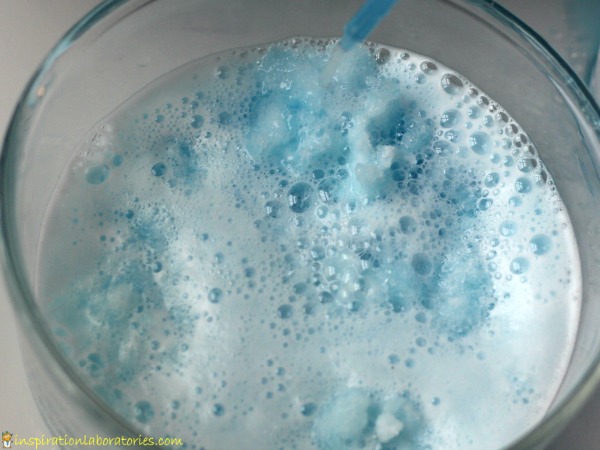
Aiden (age 7) and Lily (age 2.5) both played in the fizzy snow. They used spoons to move the snow around to different containers.

They used pipettes and spoons to add the vinegar to the snow.
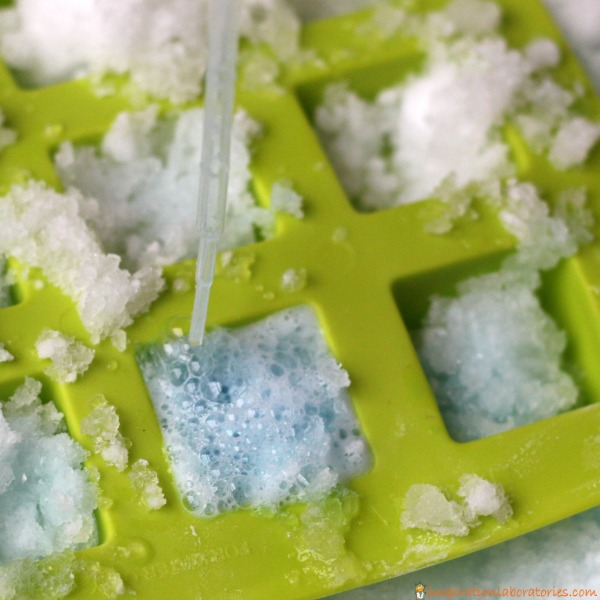
This combo gave us a bit of fizzing fun, but I wanted even more. I made a second batch of baking soda snow. This time I dissolved 4 tablespoons of baking soda into 1 1/2 cups of warm water plus I added 4 squirts of clear hand soap. Once frozen, I used the blender to crush the frozen baking soda mixture.
I filled the green ice cube tray with the snow.
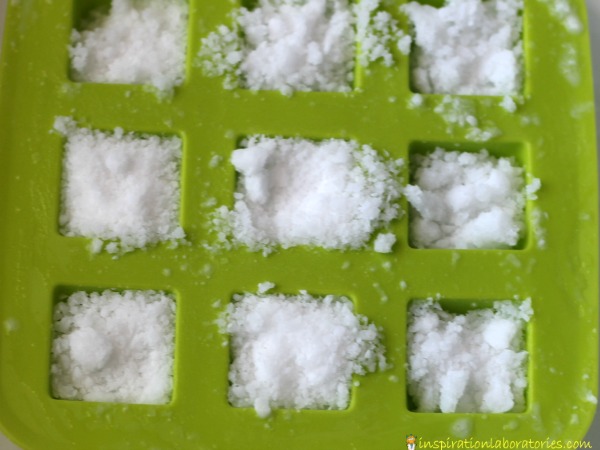
Aiden and Lily added vinegar to the snow.
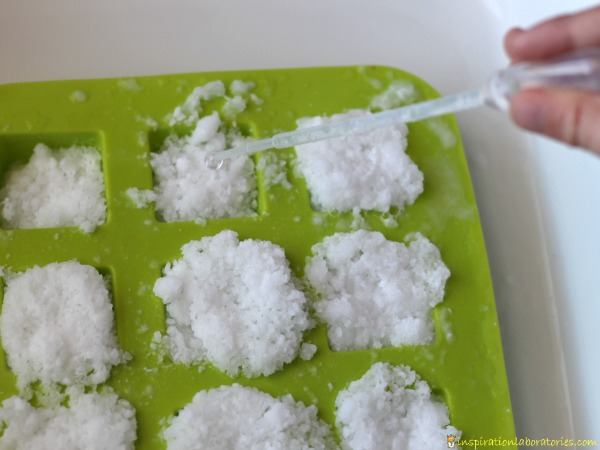
This time the snow slowly expanded and foamed up. It was a completely different experience than before. I can’t decide which one I prefer. My kids enjoyed exploring both mixtures of fizzy snow. I prefer the texture of the first batch. The second batch had a lot of baking soda and soap in it, so it did not feel like fluffy snow. Because I mixed the first batch with plain snow, it had less baking soda and felt like real snow. Next time, we’ll try mixing the baking soda and soap snow with regular snow to see what kind of reaction we can get.
Want to explore more with baking soda and vinegar? Read B is for Baking Soda and Vinegar and have fun!
More Snow Activities for Kids
- Snowy Train Sensory Bin – Add trains to snow in this wintery sensory bin.
- Cars and Ramps in the Snow – Explore how cars crash into snow with this easy snow sensory bin.
- Ice and Snow Experiments – This collection of science activities uses real snow or ice.
Subscribe to the Inspiration Laboratories weekly newsletter. Each issue has exclusive hands-on science explorations for children, a recap of our latest activities, and special resources selected just for you!
![]()

Leave a Reply